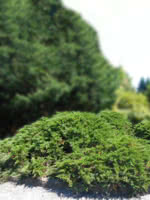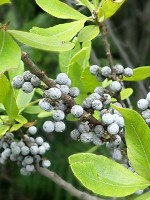Mon-Fri 9am - 5pm Mountain time
Tamarix Juniper vs Northern Bayberry
Juniperus sabina Tamariscifolia
Myrica pensylvanica
CUSTOM GROW
NOT AVAILABLE THIS SEASON - MIGHT RETURN
Tamarix Juniper has attractive, year round, blue-green foliage that will pop on a winter landscape. Not only does it provide winter interest, Tamarix Juniper is unique in that it does not “hug” the ground as one would expect. If you're looking for a shrub that is low maintenance, rabbit resistant, and tolerant of a variety of conditions, try Tamarix Juniper.
Northern Bayberry makes an excellent hedge or feature shrub. It will retain its leaves in warmer climates but drops them in colder areas. They produce blue-grey berries that have a wax coating on them that can be used to make candles or soaps.
In colder hardiness zones the leaves turn an attractive orange to red colour in the fall, making it a striking addition to your landscape.
Northern Bayberry is native to Nova Scotia and tolerates both drought and wet conditions. It is also a nitrogen fixer that tolerates poor soil conditions.
Tamarix Juniper Quick Facts
Northern Bayberry Quick Facts
Toxicity: Warning: The wax from bayberry fruit is considered toxic and may be carcinogenic.

